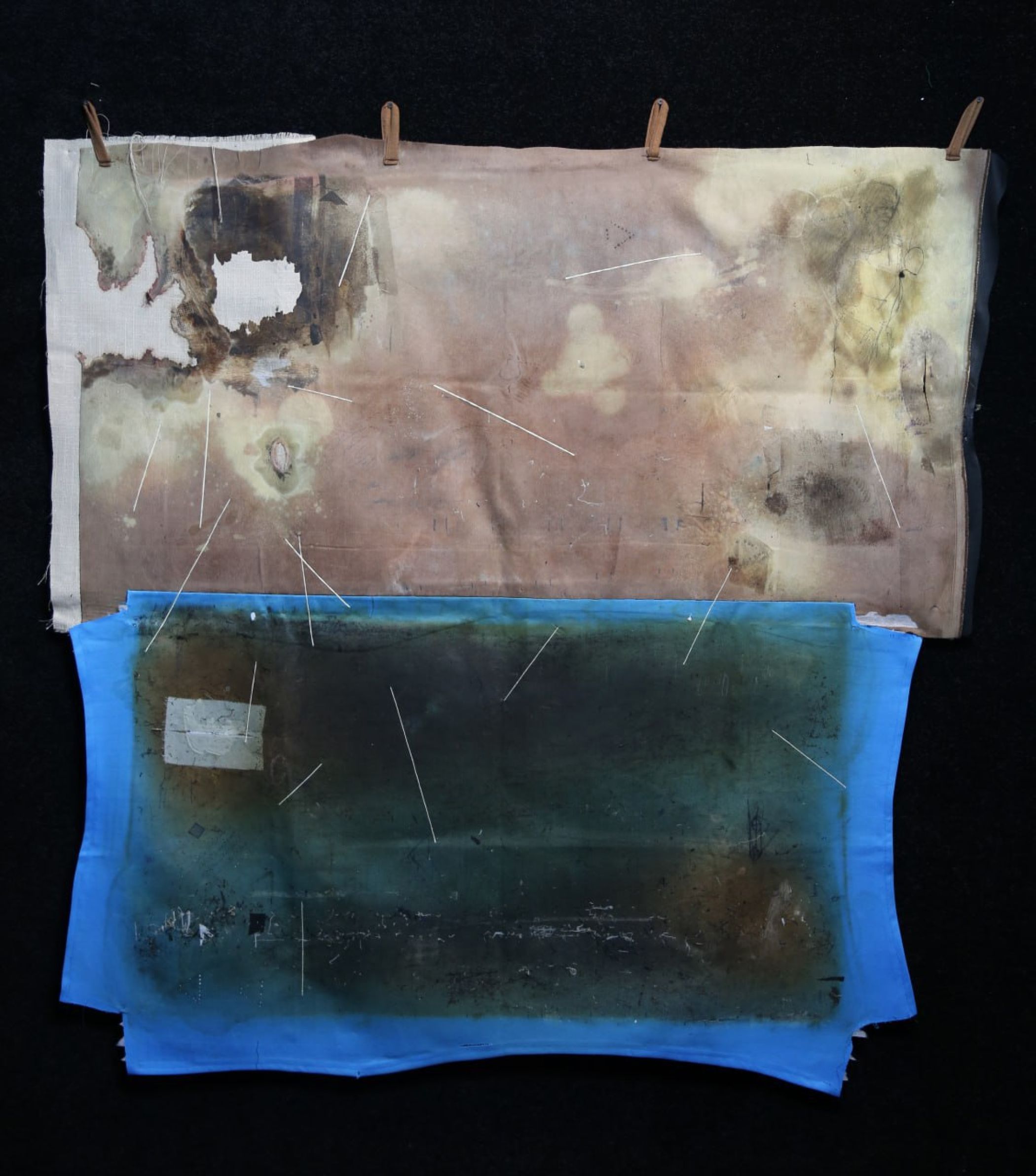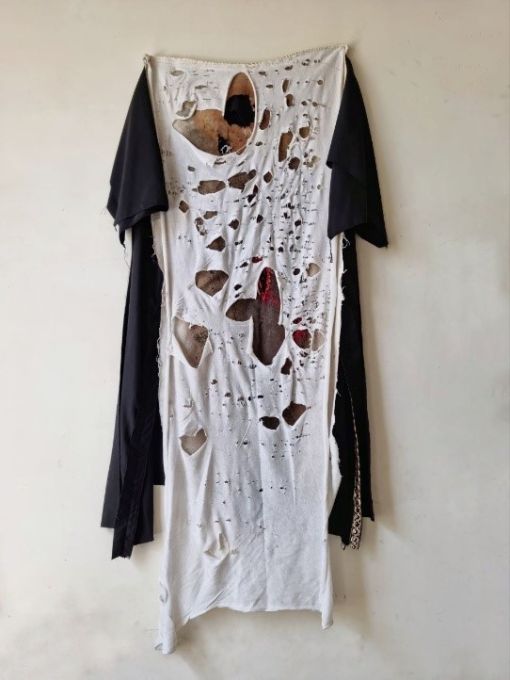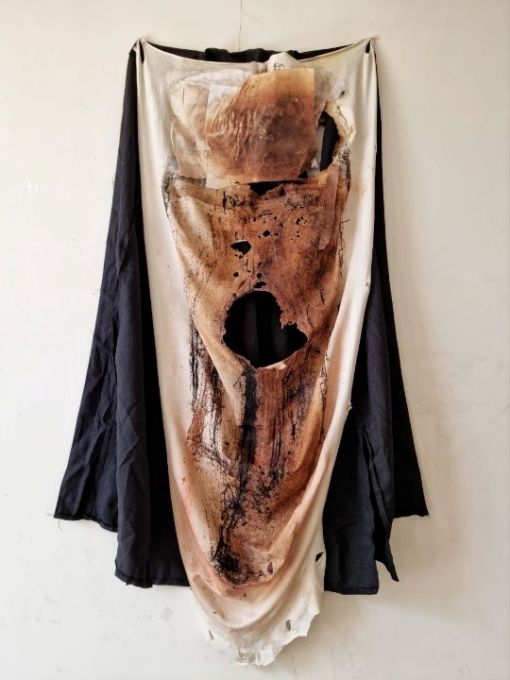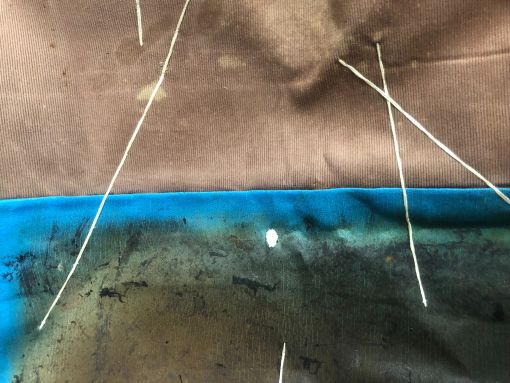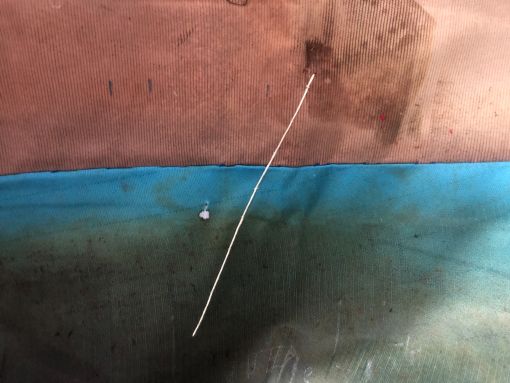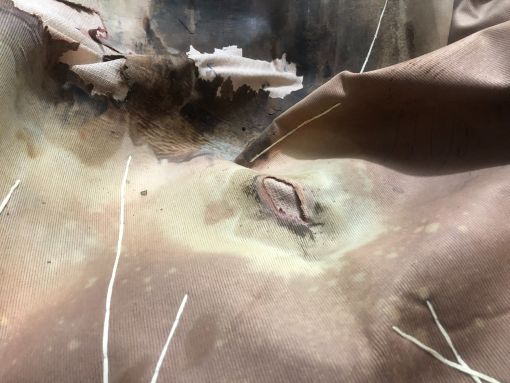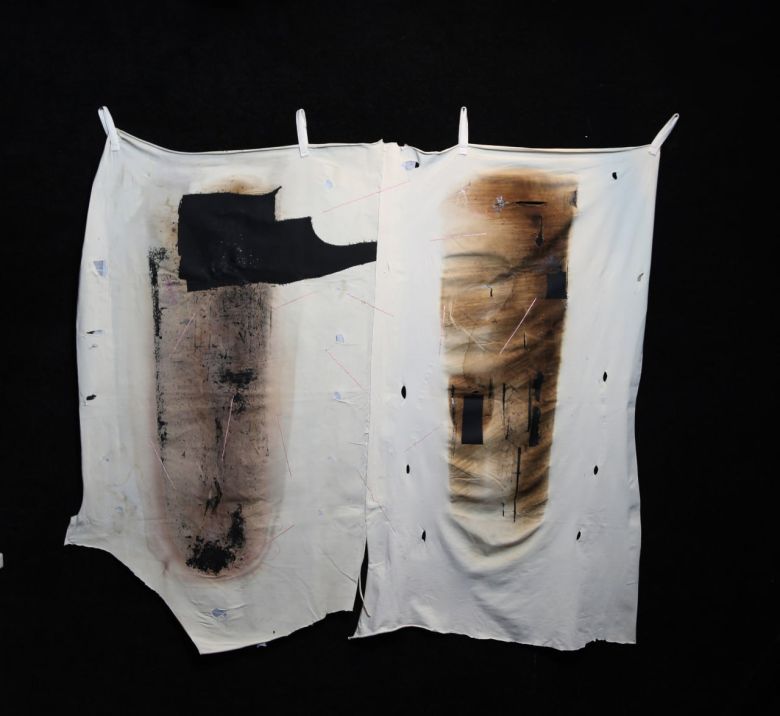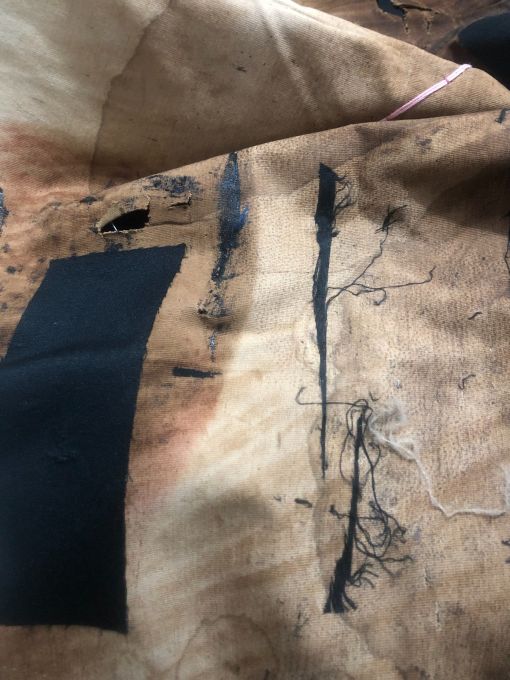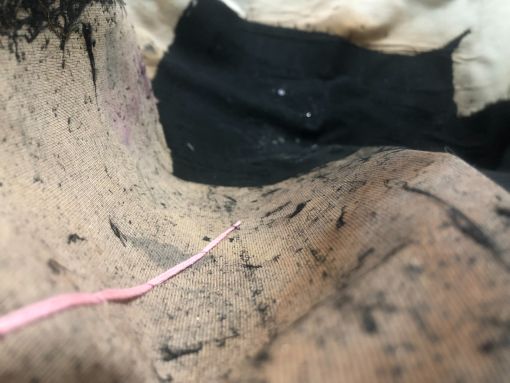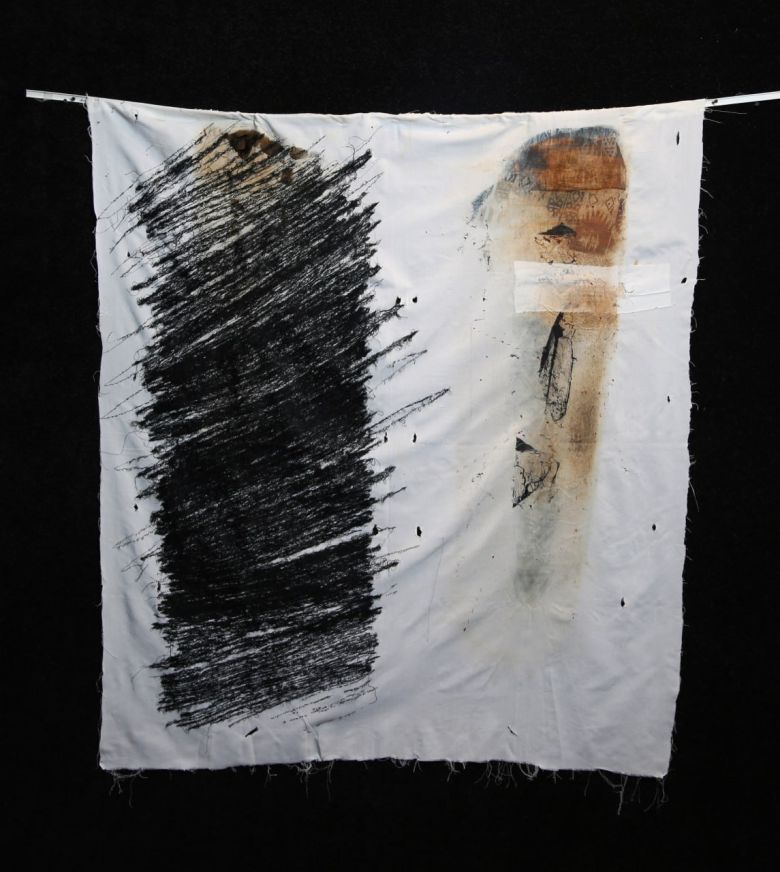Mahdi Rasouli addresses in his work the most essential human right denied to a refugee as the “other” — namely, the right to a place of one’s own. This basic right has been denied to the Afghan immigrant people, both by their own traditional and patriarchal society and families in Afghanistan, and by Iran’s xenophobic and anti-immigrant stance. Rasouli’s art does not merely express his emotional attachment to a specific geography or country with its own culture and identity; it is also informed by his experience of living between the two cultures and geographies. This existence has deprived him of any sense of certainty; thus, uncertainty and the lived experience of non-place have become his certainties.
Rasouli was born into an Afghan family in Karaj, Iran. According to international law, he should be considered an Iranian-Afghan artist. Yet it is exactly at this point that we witness Iran’s deeply problematic immigration laws and their destructive impact on the lives of immigrants and refugees. Not only will Rasouli always remain an Afghan immigrant or refugee, but he will also be perpetually “othered” both in Iran and Afghanistan. Racist laws and the marginalization he faced in the outskirts of Tehran prevented Rasouli from being able to study art in Iran. As a result, he decided to integrate his artistic life with his working life, turning his job at a tailor’s shop into an opportunity to create art. The artist’s ideas, materials, techniques, and motifs are all inspired by this working environment, where he spends most of his time. Rasouli’s dissatisfaction with both his job and living situation is expressed in his artworks.
The Sewing Workshop
The Sewing Workshop is a series of expressive mixed-media works that the artist is currently working on. The suffering and resistance of an immigrant deprived of basic human rights is conveyed through the destruction and burning of textiles from the tailor’s shop. Multiple layers of ironing board covers are sewn and randomly patched together into collages that bear witness to hours of labor and the life of a young man trying to free himself from the stigma and burden of being othered. In everyday life, Rasouli is serene and quiet; yet expressive forces erupt in his art, where the wounds inflicted on individuals as a result of being othered find a resonance, a trace, and a space of appearance. It is as if the artwork is a mirror of each and every wounded person’s experience. However, we should not forget that picking at a scab is both painful and pleasurable. The artist troubles his wounds through writing, sewing, designing, and patching together burnt textiles of all sizes.
Rasouli’s works demand to be not only looked at but also smelled. The artist turns pain and suffering into something visible and tangible, and one is tempted to reach out and touch these pieces. In his mixed-media works, the cycle of pain and suffering appears endless and infinitely recurrent, like the vicious ongoing cycles of internal and external wars, terrorist attacks, suicide bombings, and explosions that destroy the lives of innocent people in this region of the world and are responsible for numerous casualties worldwide. The pain expressed in Rasouli’s work is not just personal; it is shared by millions of refugees and migrants all over the world who face violence, discrimination, and marginalization. We can all find traces of our own anxieties, fears, suffering, and pain in these works — it is as if his art is a medium for transferring and translating these intense feelings and emotions. The artistic processes chosen by Rasouli serve as powerful acts of resistance against external pressure and oppression. The artist’s self is composed of the dispersed, transmitted, partial narratives of two societies that share much in common, yet are, in practice, deeply divided.
Mahdi Rasouli, “The Multiple Layers of Dislocation,” in mohit.art NOTES #17 (autumn 2025); published on www.mohit.art, October 14, 2025.

